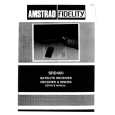|
|
|
Productos
|
|
Información
|
|
Destacado
|
|
|
 |
|
|
No hay comentarios de productos.
Bakeware
The bakeware material affects cooking results. Follow manufacturer�s recommendations and use the bakeware size recommended in the recipe. Use the following chart as a guide. BAKEWARE/ RESULTS Light colored aluminum
s s s
Baking and Roasting
Before baking and roasting, position the racks according to the �Positioning Racks and Bakeware� section. When roasting, it is not necessary to wait for the oven to preheat before putting food in, unless recommended in the recipe. To Bake or Roast: 1. Push in and turn the oven control knob to the desired temperature setting. The OVEN ON and OVEN HEATING lights will turn on and the set temperature will appear in the display for 5 seconds. On some models, set the oven selector to BAKE and turn the oven temperature control knob to the desired temperature setting. The OVEN ON indicator light will turn on and will turn
RECOMMENDATIONS Use temperature and time recommended in recipe.
Light golden crusts Even browning
s s s
Dark aluminum and other bakeware with dark, dull and/or non-stick finish s Brown, crisp crusts
May reduce baking temperatures 25°F. Use suggested baking time. For pies, breads and casseroles, use temperature recommended in recipe. Place rack in center of oven. Place in the bottom third of oven. May need to increase baking time.
off once the oven is preheated. 2. Place food in oven. The bake and roasting elements will turn on and off to keep the oven temperature at the setting. The OVEN ON indicator light(s) will turn on and off with the elements. 3. Push in and turn oven control knob to OFF when finished. On some models, turn both the oven selector and oven temperature control knob to OFF. The OVEN ON indicator light will turn off.
s
Insulated cookie sheets or baking pans
s
s s
Broiling
Broiling uses direct radiant heat to cook food. Changing the temperature when broiling allows more precise control. The lower the temperature, the slower the cooking. Thicker cuts and unevenly shaped pieces of meat, fish and poultry may cook better at lower broiling temperatures. s Use only the broiler pan and grid provided with the range. It is designed to drain juices and help prevent spatter and smoke.
s
Little or no bottom browning
s
Stainless steel s Light, golden crusts Uneven s browning Stoneware s Crisp crusts Ovenproof glassware, ceramic glass or ceramic
s
May need to increase baking time.
s
Follow manufacturer�s instructions.
s
For proper draining, do not cover the grid with foil. The bottom of the pan may be lined with aluminum foil for easier cleaning. Trim excess fat to reduce spattering. Slit the remaining fat on the edges to prevent curling. Pull out oven rack to stop position before turning or removing food. Use tongs to turn food to avoid the loss of juices. Very thin cuts of fish, poultry or meat may not need to be turned. After broiling, remove the pan from the oven when removing the food. Drippings will bake on the pan if left in the heated oven, making cleaning more difficult.
s
May reduce baking temperatures 25°F.
s
Brown, crisp crusts
s
Oven Vent
1
Before broiling, position rack according to Broiling Chart. It is not necessary to preheat the oven before putting food in unless recommended in the recipe. Position food on grid in the broiler pan, then place it in the center of the oven rack. Close the door to the broil stop position to ensure proper broiling temperature.
1. Oven Vent
The oven vent releases hot air and moisture from the oven, and should not be blocked or covered. Doing so will cause poor air circulation, affecting cooking and cleaning results. Never set plastics, paper or other items that could melt or burn near the oven vent. The element can be used when the oven is in use as long as the cookware does not extend more than 1 in. (2.5 cm) over the element.
11
|
|
 |
> |
|

